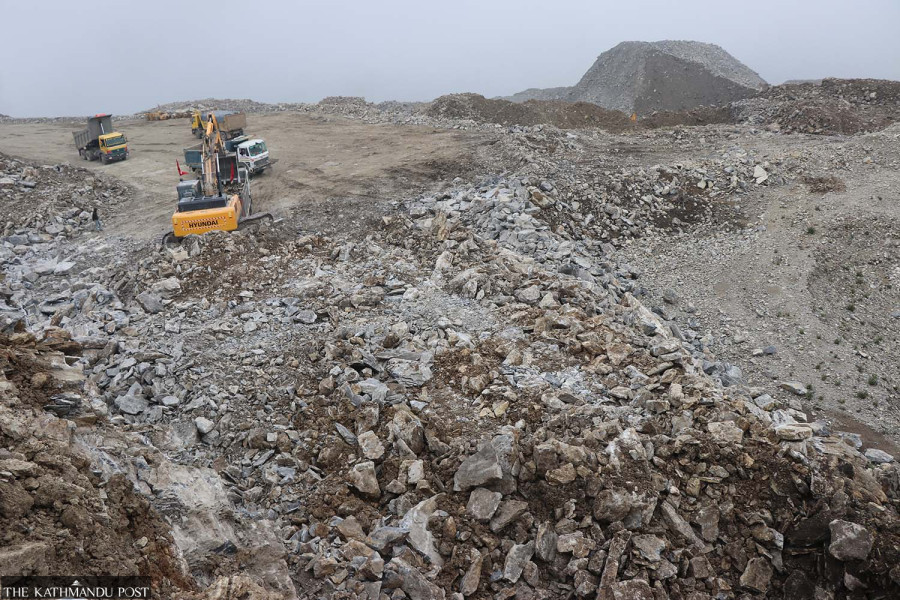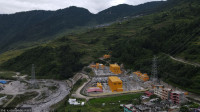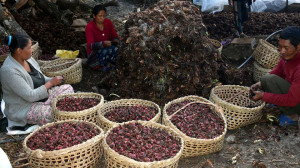Money
On automatic route, FDI commitments nearly double
Nepal received investment pledges worth Rs57.97 billion, 97 percent of them via the automatic route.
Post Report
Foreign direct investment (FDI) commitments to Nepal increased 92.65 percent in the first nine months of the current fiscal year, which ended in mid-April. This significant rise is attributed to the growing effectiveness of the automatic route, a simplified process for foreign investors.
According to data from the Department of Industry, Nepal received investment pledges worth Rs57.97 billion for 480 projects during the review period. These commitments are expected to generate employment for 12,435 people.
Prashant Bohara, director of the Foreign Investment and Technology Transfer Division at the Department of Industry, said the sharp rise in FDI commitments may be credited primarily to investors using the automatic route.
This system has created a more hassle-free environment, encouraging foreign entities to invest in Nepal.
During the review period, the department approved FDI commitments amounting to Rs55.07 billion for 256 projects via the automatic route alone.
Introduced during the third Nepal Investment Summit in April last year, the automatic route allows foreign entities or individuals to invest in specified sectors without needing prior approval from government authorities. Officials noted that this system saves investors considerable time and effort.
Foreign investors can initiate the process by visiting the official online portal at www.imis.doind.gov.np. By submitting the necessary documents through the system, applicants receive approval notifications via email along with an application number, which is used for company registration in Nepal.
The government also introduced amendments to the Foreign Investment and Technology Transfer Act, 2019 (FITTA) through an ordinance, aiming to enhance the FDI environment. Bohara said this legislative update may also have contributed to the recent surge in FDI commitments.
Under the amended ordinance issued in January, foreign investors are allowed to make equity investments in Nepali industries by purchasing units of venture capital funds or through specialised investment funds registered under the Securities Board of Nepal.
However, the ordinance still restricts foreign investment in specific agricultural sectors, including animal husbandry, fisheries, beekeeping, fruits, vegetables, oilseeds, pulses, and dairy. An exception is made for large-scale industries in these sectors that export at least 75 percent of their products. The term "large industries" has been expanded to include those utilising agricultural technology and mechanisation.
Another key amendment is the removal of the requirement for a recommendation from the provincial ministry to obtain approval for foreign investment or technology transfer in industries registered at the provincial level. Investors are now only required to obtain a certificate of industry registration.
Despite the sharp increase in FDI commitments, the actual inflow of foreign direct investment remains relatively low. According to Nepal Rastra Bank, the country received only Rs8.49 billion in FDI (equity only) during the first eight months of the current fiscal year, which ended in mid-March. This is a modest rise compared to Rs5.63 billion during the same period in the previous fiscal year.
Most of the investment commitments during the nine-month review period were for small-scale industries. Out of the 480 projects, the Department of Industry reported that 468 were small-scale, while there were only four large-scale projects and eight medium-scale projects.
The service sector attracted the highest FDI commitments, totalling Rs34.92 billion for 63 projects.
The tourism sector followed with Rs18.38 billion pledged for 189 projects. The manufacturing sector received Rs2.74 billion across 34 projects, while the information and communication technology sector drew Rs1.11 billion. The agro- and forestry-based sectors attracted Rs761 million in commitments.
During the same period, the Department of Industry recommended the issuance of business visas to 2,555 investors, 297 representatives, and 777 dependants. Non-tourist visa recommendations were made for 63 advertisements and 15 technology transfer agreements.
In terms of financial transactions, foreign investors repatriated Rs1.47 billion during the review period. The department also collected Rs451.79 million in service fees from FDI commitment applications over the first nine months of the fiscal year.
Nepal’s primary sources of foreign investment remain China and India. By the first 11 months of the previous fiscal year, China had committed Rs224.13 billion, accounting for 45.34 percent of the total FDI share. India followed with Rs106.48 billion, accounting for 21.54 percent.
Additional FDI commitments during that period also came from countries such as Hong Kong, South Korea, the United States, the United Kingdom, the British Virgin Islands, Singapore, Spain, and Australia.
Despite ongoing efforts to attract more foreign direct investment (FDI), the World Bank has projected that Nepal’s FDI inflows will remain low in the current fiscal year.
According to its latest Nepal Development Update, published in April 2025, net foreign direct investment (FDI) accounted for less than 0.1 percent of the country’s gross domestic product in the first half of the fiscal year 2024-25.
Industry experts and insiders attribute Nepal's political instability as a significant factor discouraging long-term foreign investment. Frequent shifts in policy and governance have created uncertainty, which limits investor confidence and hinders consistent capital inflows into the country.




 17.12°C Kathmandu
17.12°C Kathmandu












%20(1).jpg&w=300&height=200)
